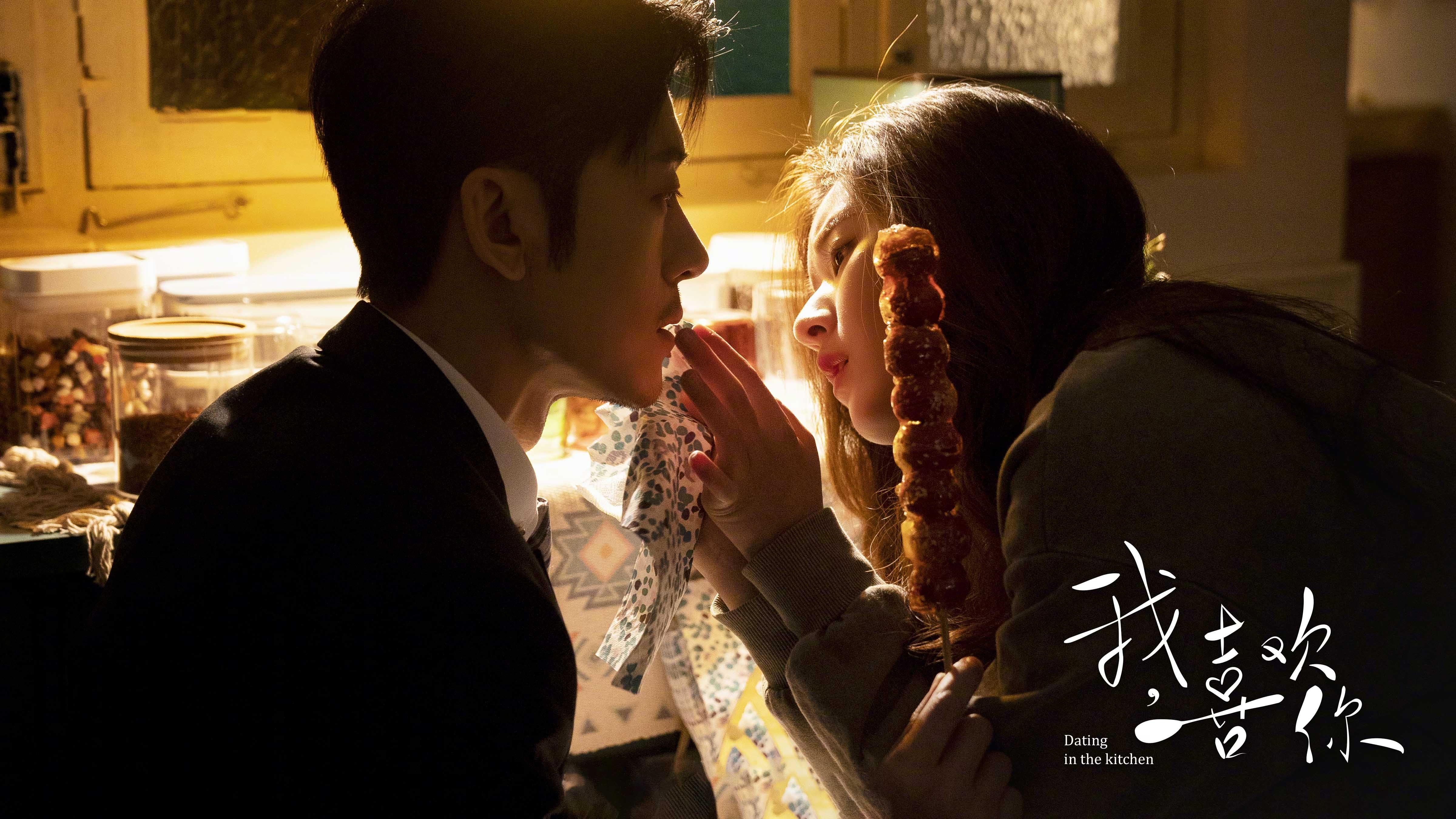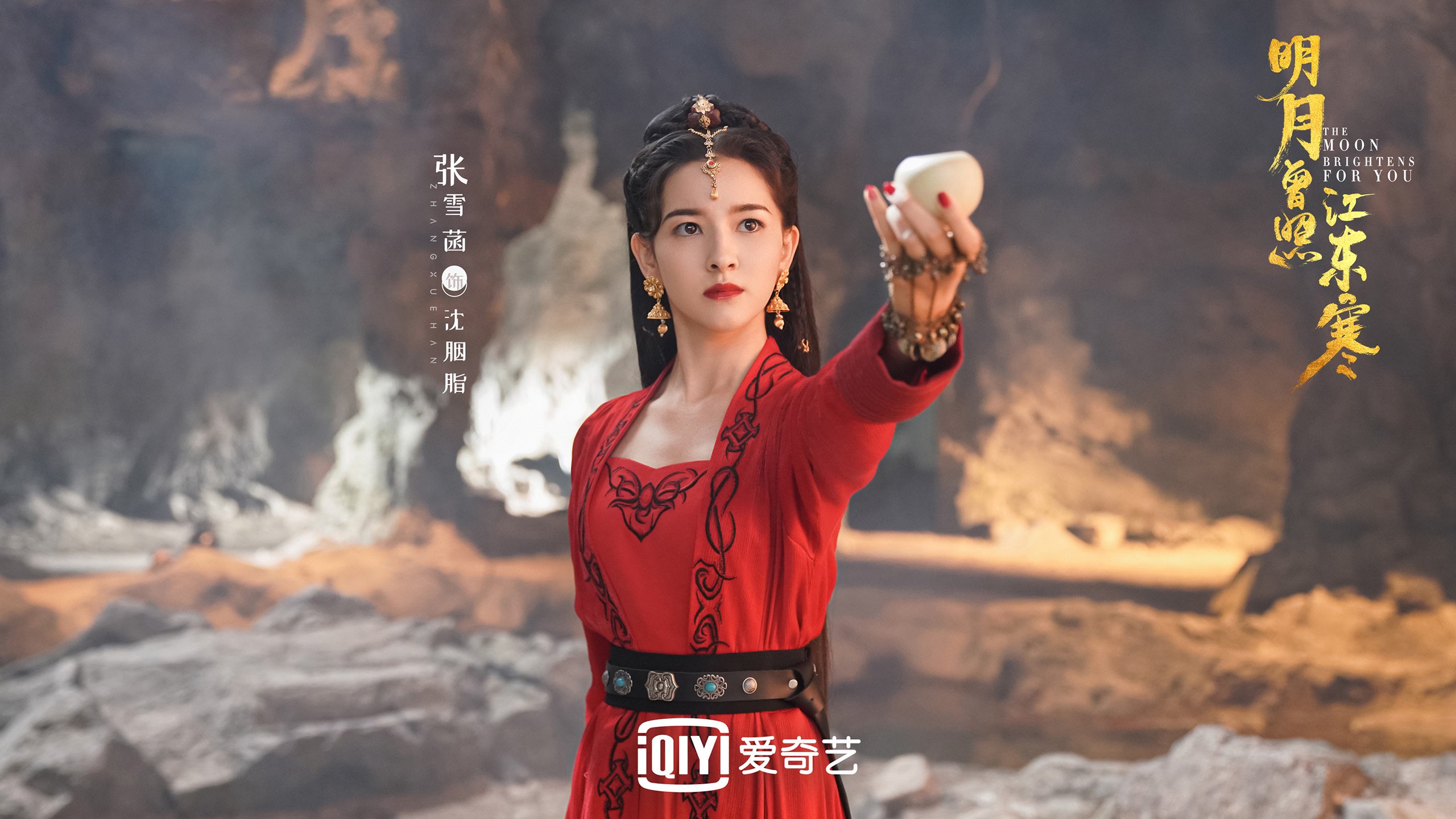History of green tea in japan & Tea ceremony 日本绿茶...
- 文化
- 24小时前
- 412
The history of green tea in japan is long and interesting. Tea first originated in China, but soon after it made its way over to the Islands, it began to change form and become uniquely Japanese.
日本绿茶历史悠久而有趣。茶最早起源于中国,但很快就传到了这个岛屿,它开始改变形式,成为独特的日本茶。
Nowadays, the tea culture and production of Japan has come to rival its mainland counterpart. In this article, we are going to track the history of tea in Japan and see how it has evolved into the drink we know it as today. We will also take a look at japan tea ceremony history, and learn how tea has become such an important part of Japanese culture.
如今,日本的茶文化和茶生产已经可以与中国大陆的茶文化和茶生产相匹敌。在本文中,我们将追踪日本茶的历史,看看它是如何演变成我们今天所知的饮料的。我们还将回顾日本茶道的历史,了解茶是如何成为日本文化中如此重要的一部分的。
ORIGINS, DEVELOPMENTS & HISTORY OF GREEN TEA IN JAPAN
日本绿茶的起源、发展与历史
japan tea ceremony history 日本茶艺史
Before we talk about the history of green tea in japan, we first have to dive into the history of tea in China. Although Japan has a long and rich history of tea consumption, it is important to note that it was brought over from China. While no one truly knows where the tea plant was first discovered,most agree that the plant first started being used in the Yunnan province of China during the Shang dynasty between 1500-1046 BC.
在我们谈论日本绿茶的历史之前,我们首先要深入了解中国的茶历史。虽然日本有着悠久而丰富的茶叶消费历史,但值得注意的是,它是从中国带来的。虽然没有人真正知道茶树最初是在哪里发现的,但大多数人都同意,这种植物最早在中国云南省开始使用是在商代,即公元前1500-1046年。
Just like other herbal concoctions of the time, tea leaves were most likely ground up and put into boiling water to be used as a type of medicinal brew. This was more like a soup rather than what we would consider a tea by today's standards. Tea was brought all over China, and it was in the province of Sichuan where it is thought to have first taken the form that we recognize today, without being added to other herbs.
就像当时的其他草药混合物一样,茶叶最有可能被磨碎并放入沸水中作为一种药用冲剂。按照今天的标准,这更像是汤,而不是茶。茶被带到中国各地,它是在四川省,在那里它被认为是第一次采取的形式,我们今天承认,没有添加到其他草药。
2ND CENTURY BCE - EARLIEST PHYSICAL RECORDS OF TEA CONSUMPTION IN CHINA
公元前2世纪——中国茶叶消费的最早实物记录
Tea Consumption in China 中国的茶叶消费
The earliest physical records of tea were found as recently as 2016 in the mausoleum of Emperor Jing of Han. This indicates that tea was consumed by the emperors as far back as the 2nd century BCE, with credible written records suggesting it was drunk much earlier.
最早的茶叶实物记录发现于2016年挖掘开的汉景帝陵。这表明,早在公元前2世纪,皇帝就开始饮用茶,有可靠的书面记录表明,茶的饮用时间要早得多。
No one knows for sure when tea was first consumed as a stimulant, but in 220AD in a medical text Shi Lun (食论) by Hua Tuo, who stated, 'to drink bitter t'u constantly makes one think better.' This enhanced concentration provided by tea drinking made it very useful to the Chinese monks.
没有人确切知道茶是什么时候第一次被用作兴奋剂的,但在公元220年的一篇医学文章《史论》中(食论) 由华佗所说:“饮苦茶常使人思绪更清。”这种通过饮茶来提高注意力的方法对中国僧侣非常有用。
8TH CENTURY - CHINESE MONK EXPORTED TEA TO JAPAN
8世纪的今天,中国僧侣向日本出口茶叶
This is where the history of tea in japan really began. The earliest records of tea consumption in Japan date back to the 8th century.
这就是日本茶的历史真正开始的地方。日本最早的茶叶消费记录可以追溯到8世纪。
During this time, the city of Nara was the first permanent capital of Japan, and Chinese teas were consumed by the monks and by the emperor.
在这段时间里,奈良市是日本的第一个永久首都,中国茶被僧侣和皇帝食用。
It was common for Buddhist monks and diplomats to take trips to China and bring back cultural practices as well as literature and art to share with people in Japan. Tea was one of the practices that made its way from China to Japan.
佛教僧侣和外交官到中国旅行,带回文化习俗和文学艺术,与日本人民分享,这是很常见的。茶是从中国传到日本的一种习俗。
The influence of the Buddhist culture 佛教文化的影响
The monks were among the first to consume tea in early Japan, and they found that the tea helped them stay calm and alert during long periods of meditation. We now know that this is due to the combination of caffeine and l-theanine, which is almost unique to the tea plant. The l-theanine stimulates alpha brainwave activity, which are the same brain waves stimulated during meditation.
这些僧侣是日本早期最早喝茶的人之一,他们发现茶有助于他们在长时间的冥想中保持冷静和警觉。我们现在知道这是由于咖啡因和l-茶氨酸的结合,这几乎是茶树所特有的。l-茶氨酸刺激α脑波活动,与冥想时刺激的脑波相同。
12TH CENTURY - MONK EISAI & THE SAMURAI
12世纪-僧侣EISAI和武士
Monk Eisai tea 荣西和尚茶
The history of tea in japan really began to get interesting once the tea started being grown on the islands. Although there are records of tea being consumed in Japan as early as the 8th century, the first record of the plant being cultivated in Japan wasn’t until 1191, when the monk Eisai brought back tea seeds from China and planted them on the grounds of Kozanji temple outside of Kyoto. This temple is in the Toganoo mountains. Toganoo tea was once considered the finest tea in all of Japan, and many only considered the tea real if it was grown in this area.
一旦茶开始在岛上种植,日本的茶历史就开始变得有趣起来。虽然早在8世纪,日本就有茶叶消费的记录,但日本种植这种植物的第一个记录是在1191年,当时和尚Eisai从中国带回了茶籽,并将其种植在京都郊外的Kozanji庙。这座寺庙位于托加诺山脉。Toganoo茶曾被认为是全日本最好的茶,许多人认为只有在这个地区种植的茶才是真正的茶。
The history of tea in japan began to transition from the temples to the rest of country. In 1211, Eisai wrote the book “kissa yojiki” on the health benefits of tea, and for the first time people other than monks and emperors began to take notice. In 1214, the Eisai introduced tea to the Samurai class. The value of tea to the samurai was originally limited to helping cure their hangovers, but later they accepted it once they embraced the principles of Zen Buddhism. Tea and Zen Buddhism were often intertwined throughout history. Dogen even included notes on serving tea during Buddhist rituals and Muso Soseki even stated that 'tea and Zen are one'.
日本的茶史开始从寺庙向全国其他地方过渡。1211年,艾赛写了一本关于茶的健康益处的书《基沙yojiki》,这是僧侣和皇帝以外的人第一次开始注意到这一点。1214年,卫材将茶引入武士阶层。茶对武士的价值最初仅限于帮助他们治疗宿醉,但后来他们接受了禅宗的原则。茶和禅宗在历史上经常交织在一起。多根甚至在佛教仪式中加入了茶点的注释,而木素素关甚至说“茶和禅是一体的”。
13TH CENTURY - TEA BECAME A SYMBOL OF STATUS AMONG WARRIORS AND HIGH SOCIETY
十三世纪的今天,茶成为战士和上流社会地位的象征
japanese samurai 日本武士
Before the development of the modern tea ceremony, tea was seen as an opportunity for the upper classes to showcase their wealth. They held gatherings in opulent tea houses around Kyoto to showcase their exotic tea and teaware.
在现代茶道发展之前,茶被视为上层阶级展示财富的机会。他们在京都周围的富丽堂皇的茶馆里聚会,展示他们异国情调的茶和茶具。
This can be seen in the story of Shogun Ashikaga Yoshimasa, the primary resident of Ginkakuji or 'the silver pavilion' outside of Kyoto. It was here that he hosted tea gatherings of the upper classes to showcase his knowledge of tea and his expensive teaware in a gold plated tea room. It was here that japan tea ceremony history began, but it would need to undergo a radical transformation in order to become what we recognize today.
这可以从东京郊外的“银亭”金阁寺(Ginkakuji)的主要居民Ashikaga Yoshimasa幕府的故事中看出。正是在这里,他在一间镀金茶室里举办了上流社会的茶会,展示他对茶的知识和他昂贵的茶具。日本茶道的历史就是在这里开始的,但它需要经历一场彻底的变革,才能成为我们今天所认识的。
15TH CENTURY - JAPANESE TEA CEREMONY HAD A RADICAL VALUE CHANGE
十五世纪的今天,日本茶道的价值观发生了根本性的变化
history of tea in japan 日本茶史
There is no person who has contributed more to the japan tea ceremony history more than Sen no Rikyu. Born during the turbulent Sengoku period to a family of merchants, Rikyu set out to make a name for himself during a time of surprisingly high social mobility.
对日本茶道史贡献最大的人莫过于森。李在动荡的仙国时期出生于一个商人家庭,在一个社会流动性极高的时期,他开始为自己成名。
At the time, tea gatherings were a way to reinforce power dynamics. Powerful and wealthy people would have others over to show their prestige and sophistication.
当时,茶会是加强权力动态的一种方式。有权势和富有的人会邀请其他人来展示他们的威望和成熟。
Then Sen no Rikyu came along with a more humble vision for what a tea ceremony should look like. Rather than a gold plated façade, Rikyu advocated for a rustic and small tea house away from the noise of the city. It was here that Rikyu would plan out the purpose and the procedure for the tea ceremony, and leave his mark on the japan tea ceremony history.
然后,千利休对茶道应该是什么样子提出了一个更谦逊的看法。理球主张建造一个远离城市喧嚣的乡村小茶馆,而不是一个镀金的外墙。正是在这里,理觉策划了茶道的目的和程序,并在日本茶道史上留下了自己的印记。
SEN NO RIKYU'S VISION 千利休的愿景
The inside of the tearoom is modestly decorated. Each tea ceremony follows a theme, and that theme is simply conveyed through the use of a flower arrangement and a scroll. The theme of today’s tea ceremony is “wood” and the flower arrangement conveys the leaves beginning to fall from the trees.
茶室的内部装饰得很朴素。每个茶道都有一个主题,而这个主题只是通过插花和卷轴来传达的。今天茶道的主题是“木头”,插花传达了开始从树上落下的叶子。
The scroll on the wall expresses the intention of cleansing our hearts before the upcoming winter Season. The theme of “wood” is also conveyed in the objects used in the tea ceremony. Here is an incense holder made from bamboo gathered around Uji. There is also another small object that is used to produce a specific scent in the tea room. The rest of the objects are used for the preparation of the ceremonial matcha.
墙上的卷轴表达了在即将到来的冬季到来之前净化我们心灵的意图。茶道中使用的物品也传达了“木”的主题。这里有一个香炉,是用收集在乌吉周围的竹子做成的。还有另一个小物体,用于在茶室中产生特定的气味。其余物品用于准备仪式上的抹茶。
17TH CENTURY - THE GOLDEN AGE THE TEA CEREMONY
十七世纪——茶道的黄金时代
Wa (harmony) Wa(和谐)
The first step of the tea ceremony begins not when you walk inside the teahouse, but actually on the path leading up to it. While walking along this path, guests purify their hearts and thoughts and leave their worldly worries behind. In a symbolic gesture, guests also purify their hands and mouth in this water before entering the tea house. This allows them to wash away the dust from the outside world. The guests then wait outside the tea house to quiet their mind before entering. The tea ceremony is built on the philosophy Wa, Kei, Sei, Jaku. Harmony, respect, purity and tranquility. Understanding these principles is a crucial part in understanding japan tea ceremony history.
茶道的第一步不是从你走进茶馆开始,而是在通往茶馆的路上。走在这条路上,客人们净化了自己的心灵和思想,把世俗的烦恼抛在了脑后。作为一种象征性的姿态,客人在进入茶馆之前也会在这水中净化他们的手和嘴。这使他们能够洗去外界的灰尘。然后,客人们在茶馆外等待,以便在进入茶馆前平静下来。茶道是建立在Wa、Kei、Sei、Jaku哲学基础上的。和谐、尊重、纯净和宁静。理解这些原则是理解日本茶道历史的关键部分。
An example of “wa” or Harmony is shown in the gardens around the tea room. The gardens are to be an extension of the flora surrounding it, living in harmony with nature.
茶室周围的花园中展示了“wa”或和谐的例子。花园是周围植物群的延伸,与自然和谐相处。
Kei (respect) Kei(尊重)
The next concept is “Kei” or respect. The guests need to respect all things, regardless of their status or position in life. This is demonstrated at the entrance of the tearoom, where guests crawl through a small door. In order to get through the door, they need to bow. Samurai must bow, emperors must bow and commoners must bow. Once inside the tearoom, all guests are equal, regardless of their status outside.
下一个概念是“Kei”或“尊重”。客人需要尊重一切,不管他们在生活中的地位或地位。这一点在茶室的入口处得到了展示,客人们从茶室的一扇小门爬进来。为了进门,他们需要鞠躬。武士必须鞠躬,皇帝必须鞠躬,平民必须鞠躬。进入茶室后,所有客人都是平等的,无论他们在茶室外的地位如何。
Sei (purity) Sei(纯度)
The third concept “Sei” or purity, is demonstrated by the tea master once the guests enter the room. Through a series of refined movements, the teamaster cleans and purifies the utensils used in the ceremony. The concept of “Sei” does not simply refer to physical purity, but also spiritual and mental purity. The guests need to purify their mind of thoughts and worries when entering the tea house. It is only then that they will be able to enjoy something as simple as a bowl of tea in silence.
第三个概念“Sei”或纯度,由茶艺师在客人进入房间后演示。通过一系列精细的动作,teamaster清洁和净化仪式中使用的餐具。“Sei”的概念不仅仅指身体的纯净,还包括精神和精神的纯净。客人进入茶馆时,需要净化他们的思想和忧虑。只有到那时,他们才能安静地享受像一碗茶这样简单的东西。
Jaku (elegance and tranquility) 雅库(优雅与宁静)
Finally, after all three concepts are discovered and embraced, all people in the ceremony can embody “Jaku” or tranquility. This was the vision that Sen no Rikyu had for the tea ceremony, and his teachings still live on, not only inside the tearoom, but outside as well.
最后,在这三个概念被发现并接受之后,仪式中的所有人都可以体现“雅库”或平静。这就是森对茶道的愿景,他的教诲不仅在茶室里,而且在茶室外都继续流传。
WHAT ARE THE DIFFERENT STEPS OF THE TEA CEREMONY?
茶道的不同步骤是什么?
To prepare the matcha for the tea ceremony, the host first must prepare the tea whisk and the tea bowl. She pours hot water from the iron pot into the tea bowl to warm it up. Then, she will take the tea whisk and gently soak each side of it. This does two things, first, it heats up the tea bowl so that it does not cool the matcha down too quickly, and it also makes the bamboo whisk more pliable.
为了准备茶道上的抹茶,主人首先必须准备好茶壶和茶碗。她把热水从铁锅里倒进茶碗里加热。然后,她会拿起茶水搅拌器,轻轻地浸泡每一面。这可以做两件事,首先,它可以加热茶碗,使抹茶不会冷却得太快,而且它还可以使竹浆变得更柔韧。
The chasen tea whisk is made out of a single piece of bamboo, with very fine bristles that can break if it is too brittle. That is why she gently moves the whisk through the water first before preparing the tea.
这种茶汤搅拌器是用一根竹子做成的,如果太脆的话,它的鬃毛会很细。这就是为什么她在准备茶之前先轻轻地把搅拌器在水中移动。
The host then discards the water into a Kensui or waste water bowl.
然后,主人将水丢弃到一个肯水或废水碗中。
The bowl is then cleaned with a different type of cloth called the Chakin. Once the bowl has been thoroughly cleaned, it is time to add the matcha. The host adds two large scoops of matcha into the bowl. In this case, the host is preparing Usucha, a normal matcha but she may also use more matcha and less water to create a powerful Koicha, or thick matcha.
然后用另一种叫做Chakin的布清洁碗。碗彻底清洁后,是时候添加抹茶了。主人往碗里放了两大勺抹茶。在这种情况下,主人正在准备Usucha,一种普通的抹茶,但她也可能使用更多的抹茶和更少的水来创造一个强大的Koicha,或厚抹茶。
Next, water is added to the bowl using the Hishaku. Finally, the host begins the whisking of the matcha. The bamboo whisk is specifically designed to mix the matcha into the water in the perfect way. The whisk also creates small air bubbles in the tea, giving it a smooth and creamy taste. The host starts by scraping off the sides of the bowl, and then moves into a diagonal movement to create a foamy texture.
接下来,使用Hishaku将水添加到碗中。最后,主人开始搅拌抹茶。这种竹制搅拌器是专门为将抹茶以完美的方式混合到水中而设计的。这种搅拌器也会在茶中产生小气泡,使茶有一种光滑而奶油般的味道。主人从刮去碗的侧面开始,然后以对角运动来创建泡沫纹理。
Once the matcha has been prepared, the host presents the bowl to the guest, with the most decorative side facing them. This is a sign of humility and respect, allowing others to enjoy the most beautiful part of the bowl.
准备好抹茶后,主人将碗呈给客人,最具装饰性的一面朝向客人。这是谦逊和尊重的象征,让他人享受碗中最美丽的部分。
When the guest is finished with the matcha, they place the bowl on the other section Of the Tatami mat.
客人吃完抹茶后,他们把碗放在榻榻米垫子的另一部分。
THE ESSENTIAL UTENSILS USED IN THE JAPANESE TEA CEREMONY
日本茶道中的必备器具
An important part of understanding japan tea ceremony history is understanding the utensils used in the tea ceremony. Each of these reinforce the principles and purpose of the tea ceremony, so they not only carry practical importance, but symbolic importance as well.
了解日本茶道历史的一个重要部分是了解茶道中使用的器具。这些都强化了茶道的原则和目的,因此它们不仅具有实际意义,而且具有象征意义。
Chakin 查金
This towel is okay to get wet, which distinguishes it from the Fukusa, which is meant to remain dry during the cleansing of the tea utensils.
这条毛巾可以弄湿,这与福萨不同,福萨的目的是在清洁茶具时保持干燥。
The chakin is made entirely from hemp and is used by the tea master to clean off the chawan or matcha bowl during the tea ceremony.
茶壶完全由大麻制成,茶艺师在茶道上用它来清理茶碗或抹茶碗。
This purification process emphasizes one of the core principles of the tea ceremony, purity, which makes the chakin an even more important part of the Japanese tea ceremony and the history of green tea in japan.
这种净化过程强调了茶道的核心原则之一,即纯净,这使得茶道在日本茶道和日本绿茶史上更为重要。
Chasen查森
The chasen or matcha whisk is the probably the utensil that most people will recognize. This is the best tool when it comes to whisking up matcha tea.
chasen或matcha whisk可能是大多数人都会认识的器具。这是搅拌抹茶最好的工具。
It is made out of a single piece of bamboo and it has between 80-100 small bristles that move through the water to aerate the tea.
它是由一片竹子制成的,有80-100根小鬃毛,它们在水中移动,为茶叶充气。
This creates a nice light green foam on top of the matcha, which can give the tea a smoother and creamier taste and consistency. The chasen matcha whisk has been long interwoven with the history of green tea in Japan.
这会在抹茶上产生一个漂亮的浅绿色泡沫,这可以给茶带来更平滑、更奶油的味道和一致性。在日本,茶抹茶威士忌一直与绿茶的历史交织在一起。
Chashaku 茶勺
The chashaku is specifically designed to be the best spoon for scooping matcha powder and it is a key part of the tea ceremony.
茶壶是专门为舀抹茶粉而设计的最好的勺子,也是茶道的关键部分。
The design may seem simple at first glance, but it has a few key features that can make it easier to prepare matcha. First off, it has more of a vertical design, compared to the horizontal design of most kitchen spoons. This makes it easier for the chashaku to scoop out of narrower containers like a matcha tin.
乍一看,这个设计可能看起来很简单,但它有几个关键特性,可以使matcha的准备工作更容易。首先,与大多数厨房勺子的水平设计相比,它更像是垂直设计。这使得chashaku更容易从较窄的容器(如火柴罐头)中舀出。
The second key design feature is that the chashaku is a pretty good measurement tool. All you need is two heaping spoonfuls from the chashaku and you will have the perfect amount of powder to create a bowl of matcha tea.
第二个关键的设计特点是chashaku是一个非常好的测量工具。你只需要从茶壶里舀两勺茶,你就可以用足量的粉末泡出一碗抹茶。
Chawan 差旺
After the chasen, the chawan or matcha bowl is probably the second most recognizable tool used in the tea ceremony. This may look like an ordinary bowl at first, but just like with the chashaku there are a few key features that help to improve the tea ceremony. First, it has steeper walls, making it easier to whis kup matcha tea without spilling. It also is made out of a thick clay, which helps to convey a sense of importance and it also helps to keep the matcha tea warm as long as it is preheated.
茶碗或火柴碗可能是茶道中第二常见的工具。这可能看起来像一个普通的碗在第一,但就像有chashaku有几个关键功能,有助于改善茶道。首先,它有更陡峭的墙壁,使它更容易惠斯库普抹茶不洒。它也是由厚厚的粘土制成的,这有助于传达一种重要的感觉,也有助于使抹茶在预热时保持温暖。
Finally, it usually has a beautiful pattern on the side, which is meant to be turned towards the guest to demonstrate one of the core principles of the Japanese tea ceremony. One of the core principles of the Japanese tea ceremony is respect, and this is demonstrated by the guest allowing others to look at the most beautiful side of the chawan as they drink the matcha tea.
最后,它的侧面通常有一个美丽的图案,这意味着要转向客人,以展示日本茶道的核心原则之一。日本茶道的核心原则之一是尊重,客人在喝抹茶的时候,允许他人看到茶湾最美丽的一面,这就证明了这一点。
Fukusa 福朱
Unlike the Chakin, this towel is meant to remain dry, and it is used to purify the objects used in the tea ceremony like the natsume and the chashaku.
与茶巾不同的是,这种毛巾是用来保持干燥的,用于净化茶道中使用的物品,如夏目漱石和茶壶。
This cloth is made out of silk rather than hemp and it is usually kept around the waist of the tea master until it is ready to be unfolded at the start of the tea ceremony.
这种布是用丝绸而不是大麻制成的,通常放在茶师的腰上,直到茶道开始时才展开。
After the tea master is done using the fukusa, she will fold it back up the same way, and place it back on her belt.
茶艺师使用完福萨后,她会用同样的方法把它折起来,放回腰带上。
Hishaku 久久
The hishaku is the bamboo ladle used to scoop the water out from the iron pot and into the matcha bowl.
hishaku是一种竹勺,用于将水从铁锅中舀出来,然后放入抹茶碗中。
The tea master will fill the hishaku halfway up with water in order to prepare the matcha tea.
茶艺师会在久煞锅里加满半杯水,准备抹茶。
A Hishaku can also be used outside of temples as part of the purification ritual, but these ones tend to be much larger.
作为净化仪式的一部分,久刹也可以在寺庙外使用,但这些寺庙往往要大得多。
Kama 卡马
The kama is the iron pot used to heat the water during the tea ceremony. When you walk into the tea room, you may notice a square hole carved out in the tatami mats. This is where the kama or iron pot is nestled inside, and it is lined with a bronze, heat proof material that also contains hot coals at the bottom. These hot coals are how the water is heated throughout the tea ceremony.
茶壶是茶道上用来烧水的铁锅。当你走进茶室时,你可能会注意到榻榻米垫子上刻着一个方洞。卡玛锅或铁锅就在这里,里面衬着一层铜质的耐热材料,底部还含有热煤。在整个茶道中,这些热煤是如何加热水的。
Natsume 夏目漱石
The natsume is also called the “tea caddy” and it is the small container used to transport the matcha powder during the tea ceremony. The matcha powder inside here will usually be presifted, saving the host one more step in the tea ceremony. This is usually made out of lacquered or unprocessed wood and it gets the name because it resembles the jujube fruit which is called natsume in Japanese.
夏目漱石也被称为“茶壶”,是茶道上用来运输抹茶粉的小容器。这里的抹茶粉通常会预先取出,这样主人就可以在茶道上多走一步。这通常是由涂漆或未经加工的木材制成的,它之所以得名是因为它类似于日本称为夏目漱石的枣子。
18TH CENTURY - SWITCH TO LEAF TEA 18世纪-改用叶茶
For hundreds of years, Uji was the hub of tea cultivation in early Japan, and it still maintains much of that status today, particularly for matcha. Many tourists come to Uji every year to take part in tea ceremonies at Taihoan tea house, and to visit the many matcha shops between Uji station and Byodoin temple.They also come to learn about the history of green tea in Japan. In the surrounding areas of Ogura and Ujitawara there are also many historical sights to commemorate the invention of Sencha and Gyokuro tea.
几百年来,Uji一直是日本早期茶叶种植的中心,今天仍然保持着这种地位,尤其是对matcha来说。每年都有许多游客来乌吉参加太和庵茶馆的茶道仪式,还参观了乌吉车站和拜占庭寺之间的许多火柴店。他们也来了解日本绿茶的历史。在Ogura和Ujitawara的周围地区也有许多历史景点来纪念Sencha和Gyokuro茶的发明。
In the 1500s and 1600s, matcha was the primary way to consume green tea in Japan, but that all changed with the invention of Nagatani Soen. This tea grower in Uji discovered that rather than grinding tea leaves into a powder, they could be steamed, rolled and dried to maintain their flavor for long periods of time. They could then be prepared in a teapot and poured into a glass. This discovery allowed Nagatani Soen to popularize the use of Sencha tea, now by far the most common type of green tea in Japan.
在16世纪和16世纪,抹茶是日本主要的绿茶消费方式,但随着长谷轩的发明,这一切都发生了变化。这位乌吉的茶农发现,与其将茶叶磨成粉末,不如将其蒸、卷、干,以长时间保持其风味。然后可以在茶壶中制备,然后倒入玻璃杯中。这一发现使长谷梭恩推广了Sencha茶的使用,Sencha茶目前是日本最常见的绿茶。
The Childhood home of Nagatani Soen is now a popular tourist attraction and a nearby shrine was built to commemorate his discovery of Sencha in 1737. Larger Japanese tea companies fund the upkeep of this shrine, in order to pay their respects to the father of modern Japanese green tea. If you ever get to visit Uji, it may be worth the short trip over to Ujitawara to see this site for yourself.
Nagatani Soen儿时的家现在是一个受欢迎的旅游景点,附近修建了一座神社,以纪念他在1737年发现Sencha。日本较大的茶业公司出资维护这座神社,以向这位现代日本绿茶之父致敬。如果你有机会访问Uji,也许值得你亲自去Ujitawara看看这个网站。
19TH INNOVATION AND INDUSTRIALIZATION
十九世纪的创新与产业化
Like most things, the history of tea in japan changed radically during the industrial revolution. An important discovery in the history of Japanese green tea happened at a small site in Ogura. A tea merchant by the name Yamamoto Kahei had traveled around Japan to study tea cultivation and he noticed that certain family farms would cover their tea plants to protect them from the cold. By cutting off the sunlight from the plants, it actually made the tea sweeter. He began to implement this method and in 1841 he created a long shaded tea that developed a green residue during the production process. He named this tea Gyokuro or “Jade Dew”
和大多数事情一样,日本的茶叶历史在工业革命期间发生了根本性的变化。日本绿茶历史上的一个重要发现发生在大村的一个小地方。一位名叫山本嘉惠(Yamamoto Kahei)的茶商曾周游日本研究茶叶种植,他注意到某些家庭农场会覆盖他们的茶树,以保护它们免受寒冷。通过切断阳光从植物,它实际上使茶更甜。他开始实施这种方法,并在1841年,他创造了一个长期的阴影茶,开发了绿色残留物在生产过程中。他把这种茶命名为“玉露”
Gyokuro became famous for its trademark sweet and savory flavor, and this sparked a renaissance in the production of Japanese green tea. Farmers now could experiment with different levels of shading, different steaming, rolling and drying techniques to create the wide array of tea varieties we see today.
Gyokuro以其标志性的甜味而闻名,这引发了日本绿茶生产的复兴。农民现在可以尝试不同程度的遮荫、不同的蒸、滚和干燥技术,创造出我们今天看到的各种各样的茶叶品种。
20TH CENTURY 20世纪
history of green tea in japan日本绿茶的历史
In the early 20th century, another important tea production method was discovered and that was roasting. This practice began in Kyoto and later spread out to all of Japan. By roasting the teas, farmers and producers were able to create a completely unique tasting experience, playing off of these warmer notes of coffee, caramel and chocolate.
20世纪初,另一种重要的茶叶生产方法被发现,那就是烘焙。这种做法始于京都,后来蔓延到日本全国。通过烘焙这些茶,农民和生产者能够创造出一种完全独特的品尝体验,演奏出咖啡、焦糖和巧克力等温暖的音符。
Starting in the mid 20th century the tea production process in Japan became more industrialized. The harvesting of the tea could be done by machine, and so could the steaming, rolling and drying. This allows the farmers to produce tea more efficiently with less manual labor. Certain tea factories in Japan are almost completely automated, taking in fresh leaves and moving them through the production with a series of conveyor belts.
从20世纪中期开始,日本的茶叶生产过程变得更加工业化。茶叶的收获可以用机器来完成,蒸、滚和干燥也可以用机器来完成。这使得农民可以用更少的体力劳动更有效地生产茶叶。日本的某些茶厂几乎完全自动化,接收新鲜茶叶,并通过一系列传送带将其运送到生产过程中。
MODERN DAY现代
The history of tea in Japan is not over! In modern Japan, the most common way to consume tea is now in bottled form. These ready to drink teas are sold in vending machines on virtually every street corner in Tokyo. They keep the drinks hot in the winter and cool in the summer. Although these teas aren’t anything close to freshly brewed loose leaf tea, these unsweetened bottled teas commonly outsell sugary soft drinks, which is quite an accomplishment. This shows that the love of tea in modern society isn’t going away anytime soon.
日本茶的历史还没有结束!在现代日本,最常见的消费方式是瓶装茶。这些即饮茶在东京几乎每个街角的自动售货机上出售。他们在冬天使饮料保持热,在夏天保持凉爽。虽然这些茶与刚泡好的活叶茶没有什么相似之处,但这些不含糖的瓶装茶的销量通常超过了含糖软饮料,这是一个相当大的成就。这表明现代社会对茶的热爱并不会很快消失。









